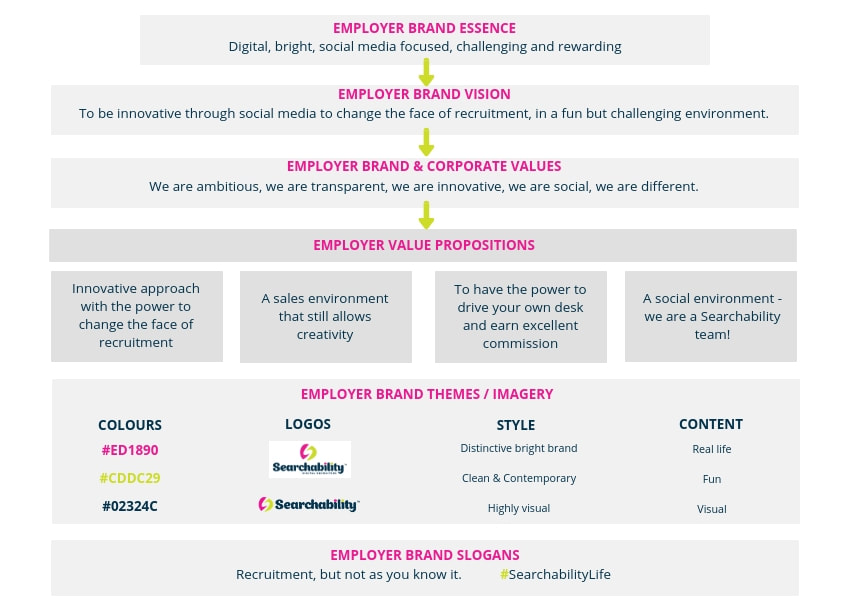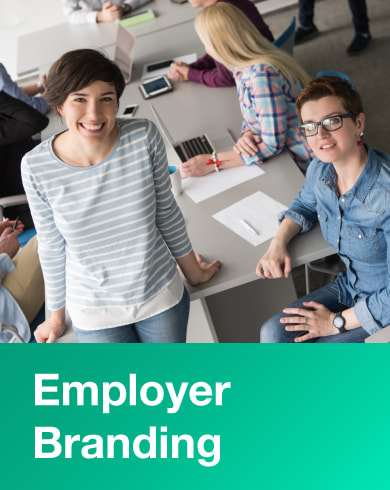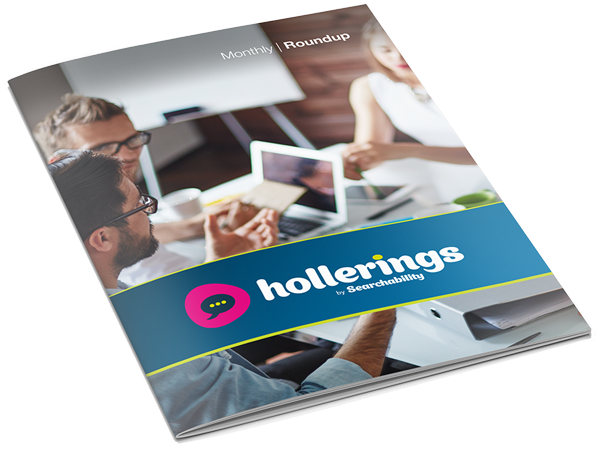How to discover your Employer Brand Image
Here are a few suggestions to get you started:
When considering brand image for candidate attraction you must take a step back and examine what this would look like to a person that isn’t already familiar with your organisation. The easiest way to do this is with a desktop analysis. Put yourself in a candidate’s shoes and see what information you can discover about that company online. Visit the website, check out the careers pages, read the job descriptions, see what the reviews are like on Glassdoor, browse the images on the company Instagram and check out the interactions on Twitter. You have a digital footprint that paints a picture of your employer brand image – the question is, do you like what you see? And if the answer is no then you’ll need to find a way to change those negatives into positives.
Once you have done your desktop analysis you should meet with key stakeholders of the business to discuss your findings and to get their opinions on what your “employer brand image” is, based upon the information you discover as well as information you have about your company culture, working environment and EVP’s. Once you have a rough idea of the elements that make up this brand image you’ll want to survey your employees (current and if possible past) to determine how accurate your perceptions are. The Director for example may have an overly positive view of your brand image in comparison to your employees, so it’s important to discover what the reality really is to ensure your brand image is authentic.
The brand architecture will help give you the base for future employer branding campaigns and give you a clear picture of what your brand image is. To build this you’ll want to discover your employer brand essence, employer brand vision, and your employer brand values (which should align with the corporate values you already have). You will want to define your EVP’s (employer value propositions), define the imagery you use to showcase your employer brand and any slogans you will use too.
Here’s a brief example from our sister company Searchability to outline:
How can brand image impact candidate attraction
An example of a Negative Brand Image
An example of a Positive Brand Image
What do you do if your brand image isn’t perfect?
Negative Employee Reviews
Online reviews have a big impact on a company’s brand image, but the frustrating thing is you are more likely to receive a review from someone who is unhappy and wanting the vent a frustration than employees who are happy and content in their role. Combat negative reviews by inviting your happy and engaged employees to submit a review too, which will boost your overall rating and water down the unhappy reviews! Don’t just ignore those negative reviews however as you could be missing out on a major issue that you need to rectify which eventually could lead to employees leaving. Check out our blog How to fix your poor Glassdoor rating in 6 steps to learn more.
Disgruntled Customers
If a customer is unhappy with your service they are more likely to take to social media to share their frustrations with the world than sit on hold to your customer services team. Public venting gets you heard quicker, and that means the companies with unhappy customers are likely to have these comments splashed across their social media – not a great first impression for candidates looking to apply for a job role! If this sounds familiar, the first thing you need to do is create a standalone careers focused social media presence, so that candidates dropping onto your pages will be able to learn about your employer brand away from the noise of unhappy customers, but most importantly, listen and react to your comments as you may learn something that can help your company improve customer satisfaction long term!










